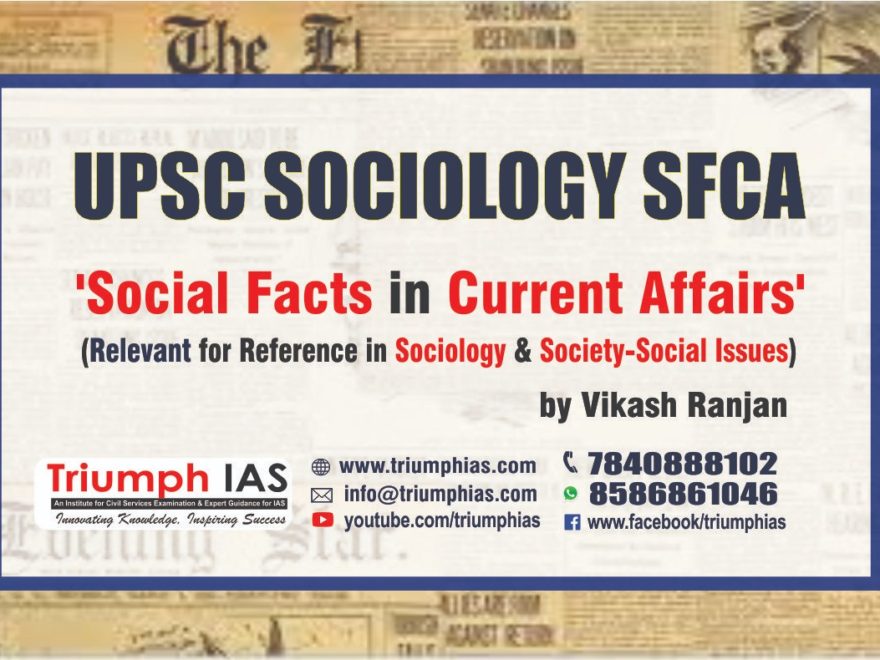INDIA’S VULNERABLE CHILDREN ARE PAYING THE PRICE OF UPPER-CASTE PREJUDICE WITH THEIR BODIES
- (Relevant For Sociology Syllabus: Paper 1- Stratification And Mobility & Paper 2- Caste System)
- (Relevant For GS Syllabus: Paper1- Poverty And Developmental Issues.)
- Influenced by conservative vegetarian lobbies, most BJP-ruled states do not serve nutrition-laden eggs in school and Anganwadi menus.
- In her haunting short story Shishu (Little Ones), writer Mahashweta Devi depicts the cruelty of shrunk bodies deformed by acute hunger and starvation in Adivasi hamlets, due to chronic administrative apathy.
- Reminiscent of this dystopian parable, the recently released National Family Health Survey 2019-’20, for the first time since the turn of the millennium records that child stunting has worsened in 13 of 22 states.
- At least one of every three pre-school children in India is too short for their age. This declining trend in child heights was measured with the gnawing impact of demonetisation and economic slowdown, before the lockdown.
UPPER-CASTE PREJUDICES
- After the pandemic, with schools closed and rations running thin, the situation becomes so grave that multiple news reports during the lockdown found children forced to work, sell scrap and survive on very little good.
- Instead, children should be consuming nutritious eggs, which even during the lockdown could have easily been home delivered from educational institutions as Andhra Pradesh and Odisha have ably demonstrated. But influenced by conservative vegetarian lobbies, most BJP-ruled states refuse to serve eggs in school and Anganwadi menus.
- Worse, only a few BJP-ruled states provide milk or fruits as substitutes. In Uttar Pradesh, last year a video even surfaced of school children being served one litre of milk mixed with a bucket of water.
- Maps based on the latest National Family Health Survey data also showcase that these states, largely in the northern and western heartland, invariably also have the highest levels of child malnutrition. The previous NFHS reports have also consistently shown a distinctly regressive trend of “graded inequality” – Adivasi, Dalit and Other Backward Class children are more likely to be stunted than the rest
- On the other hand, due to traditional upper-caste prejudices in India, eggs are often erroneously derided as “non-vegetarian”. In 2019, a BJP politician in Madhya Pradesh, a state which has explicitly banned eggs in Anganwadis, with a straight face, told a slew of reporters that, “If children eat meat, they may grow up to be cannibals.”
- Based on this irrational reasoning, the planet should abound with potential anthropophagi. Four of every five people worldwide eat animal meat. Japanese, Chinese and Mexicans consume the most eggs. But by any stretch of the imagination, sterilised eggs are not flesh foods.
THE VEGETARIANISM MYTH
- The myth of widespread vegetarianism in India is also a misconception. Employing different methodologies, four different nationwide surveys concur that 63% to 76% of India’s population regularly consume non-vegetarian foods. Even more, include eggs in their diet.
- The main handicap, however, is the affordability of eggs and meat in household diets. The 2019 Comprehensive National Nutrition Survey found that children from poorer families are less likely to consume eggs, fish or meat. Women and girls who usually eat last in most homes are also invariably the most deprived.
- However, there are distinct regional patterns in food consumption. Tony Joseph in the book Early Indians, emphasises that due to the gene mutation 13910T which shows a distinct “north-west to south-east declining pattern” geographically, only a fifth of Indians can digest milk in adulthood.
- Therefore South and East Indians are more likely to substitute milk with animal protein. However, this does not genetically preclude populations in any state from consuming eggs or meat. In schools, however, as inclusive public policy children must always, of course, be provided vegetarian alternatives too.
- Ninety-two per cent of Indian villages have an Anganwadi centre. However, even in regular times, their functioning is patchy, with caste an invisible barrier. In 2015-’16, only 48% of children under six years received any food from these centres, with the proportion ranging from 14% in Delhi to 75% in Odisha. On the other hand, a 2015 study by the Human Resource Development Ministry showcased that introduction of eggs in the menu helped improve attendance across schools in two states.
- Eggs as nutrient-dense superfoods also contain a veritable mix of necessary proteins, vitamins and minerals. Promisingly, the 2020 New Education Plan also mentions that breakfasts will also be introduced in schools. This opens an additional opportunity to substantially boost children’s nutrition
- In another iconic children’s fable, Our Non-Vegetarian Cow, Mahashweta Devi hilarious recounts how the family pet “Nyadosh” develops an unusual taste for fried fish and country liquor. Fortunately, all Indian cows do not similarly run riot. But India is perhaps the only country where cow’s milk is considered to be vegetarian, but sterilised chicken eggs are mistaken to be non-vegetarian.
- Indian children are literally paying the price with their physique for this fictitious nutritional prejudice.


